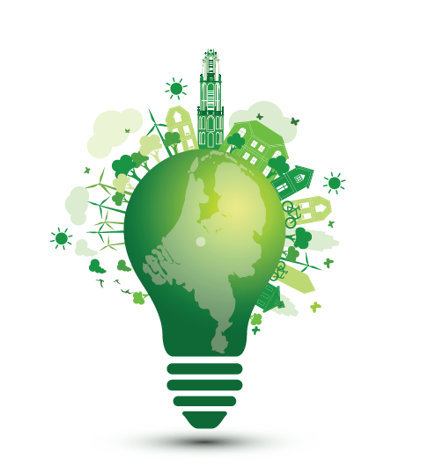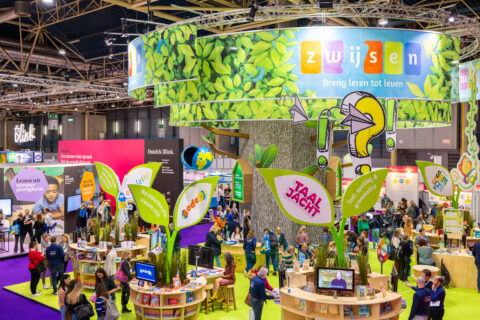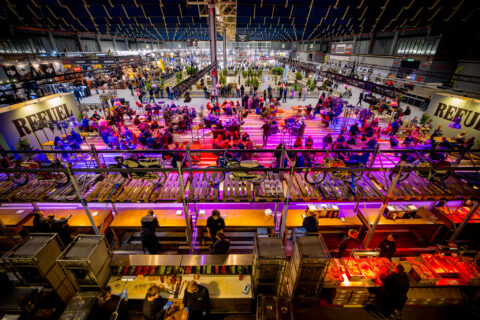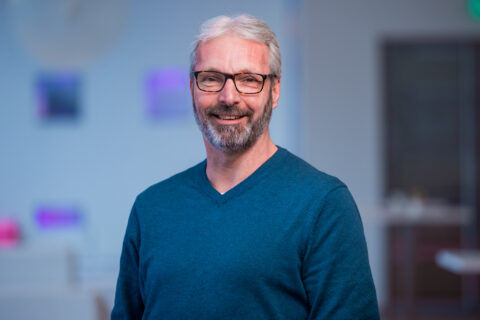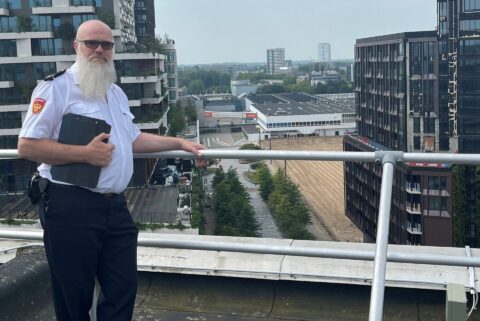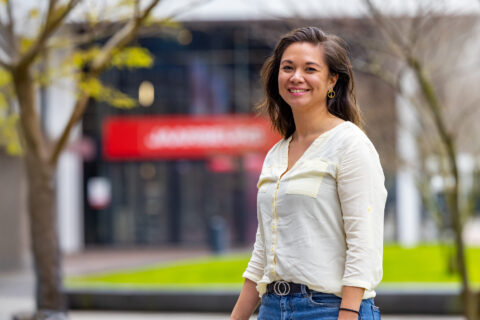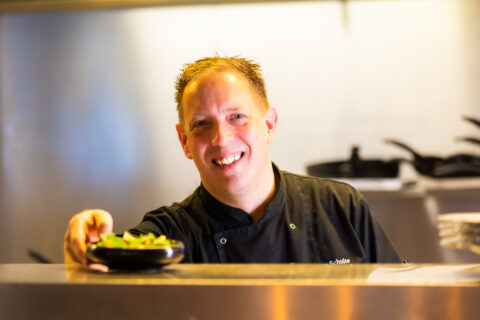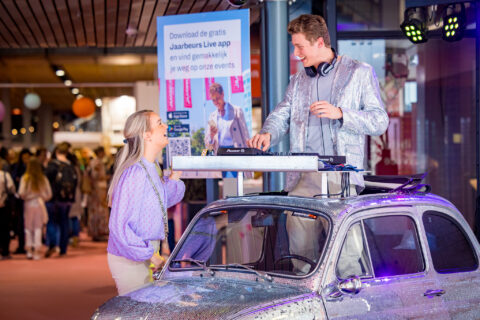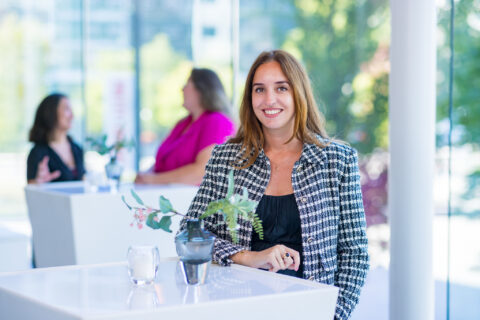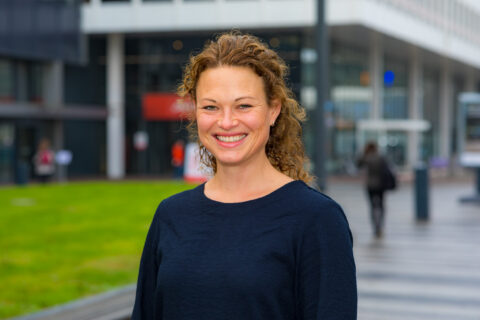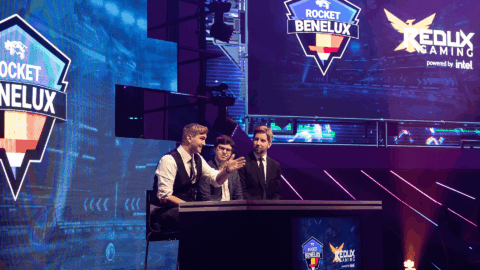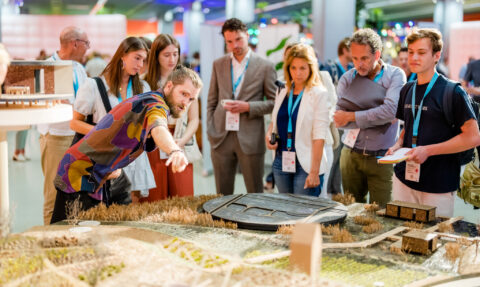Lockdown - a company like Jaarbeurs might be despondent about it. But that is not the case. On the contrary, the corona crisis makes Chief Sustainability Officer Marloes van den Berg combative. "Sustainability is exactly now something you can fully incorporate at the front end, in the company itself and at the back end," she says.
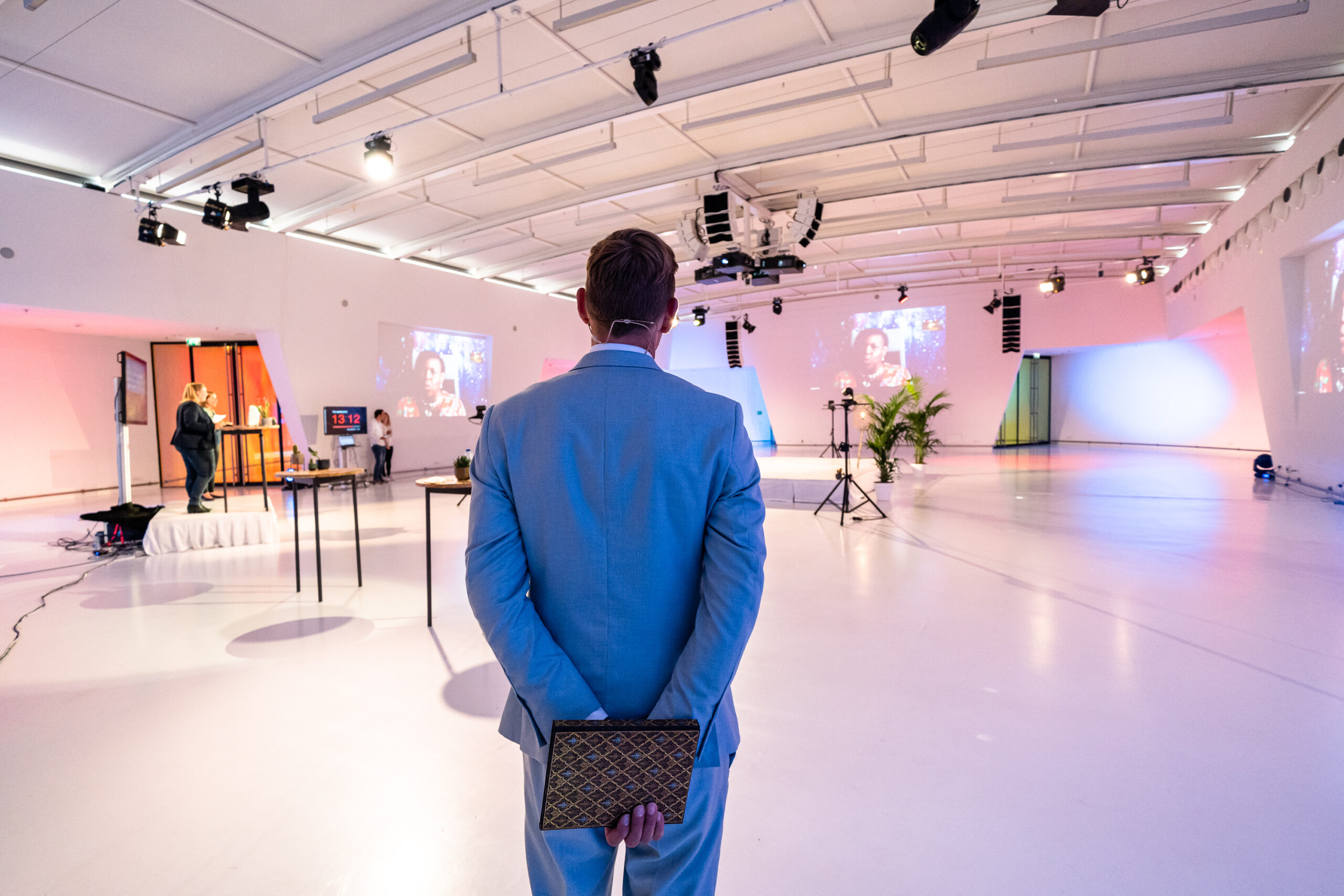
After the lockdown was announced on Saturday 18 December, there were immediate consultations with all line managers at Jaarbeurs the following Monday morning. The live exhibitions (which previously accounted for 50 per cent of turnover) were put on hold again. Fortunately for the organisation, Jaarbeurs had already broadened its activities. The ongoing corona measures played a part in that, but in addition to that, Jaarbeurs already had ambitious sustainable objectives. Jaarbeurs can now call itself a hybrid organisation: live and online events can be organised here.
Van den Berg: "So during a lockdown, the online parts can continue as usual, which is good news. In addition, we now have our own recording studio up and running." Evenlive, Jaarbeurs is not completely locked out at the moment, as it acts as a venue for the upcoming school exams. It is also a major venue for the Utrecht GGD's vaccination teams. The latter in particular makes Manager of Event & Exhibitor Success Natasja O'Connor proud. "It shows the flexibility of the organisation. Within a few days, the venue was there thanks to our fast stand builders."
Scholarship seasons rescheduled
For now, all public events have been removed from the calendar for January and February. In fact, Van den Berg reckons that in the future, the so-called fair seasons will look very different. "Whereas previously autumn and winter were the best fair periods, it could well be that this preferred time will shift to spring and summer." Again, Van den Berg shows himself to be an optimist. This shift in the trade fair calendar might be a positive thing. Some industry associations used to stick to certain periods in a year. "You see now that everything is becoming a lot more fluid. What seemed impossible now turns out to be possible. That gives room to use our venues in a different way."
O'Connor says stand construction is also undergoing a change. "Over the last year, we have seen trade show planning taking place on a shorter timescale, and build-up and tear-down times becoming shorter." Shorter build-up times in particular were already a trend. This is why Jaarbeurs knows that the speed of stand construction is important. System construction is a solution for this, as it allows exhibition stands to be put together quickly in the same way at all times. "That is of course very efficient and this way of working is also sustainable because materials are reused again and again." She adds, "The materials themselves are also becoming more and more sustainable."
Europe's most sustainable fair
It is not only in the area of stand construction that Jaarbeurs has made strides. Back in the previous lockdown period, Van den Berg's team took the time to reflect and look ahead. How could the operation become more sustainable? A job, because the image of the big exhibitions is still clear in everyone's mind. Paper fair books and maps lying all over the ground after the fairs. Food consumed from plastic plates. Waste from visitors and stands that filled many containers. Van den Berg was - and still is - ambitious: Jaarbeurs should become Europe's most sustainable exhibition and event venue. The plans involved scrutinising everything: the materials they worked with on the exhibition floor, but also the food and drink, transport, waste flows and how staff are dealt with. Van den Berg: "We also look at the design of the stands, such as furniture, lighting and details of the decoration."
Smart stock market for the future
As for the catering industry, Jaarbeurs has made changes both before and behind the scenes. Van den Berg: " Jaarbeurs 's company restaurant has been made completely fish- and meat-free and the public restaurants now have 90 per cent less meat or fish on the menu. Food that is left over goes to the Food Bank or is distributed through apps like Too Good To Go."
Jaarbeurs has also made decisions in materials. Cups are 99 per cent recycled during events through a proprietary system and used packaging is also recyclable. Jaarbeurs has also examined waste streams and ensured that waste is separated much more strictly. O'Connor: "For example, when building up exhibitions, there are now people walking around addressing customers and suppliers on the use of materials and waste separation." And not only people, but technology is also used proactively. Jaarbeurs has developed an app where visitors can see exactly where they are, which stands are at the fair and what there is to do. "A kind of positioning system, which makes all the paper and pencils of trade fair maps redundant," he says.
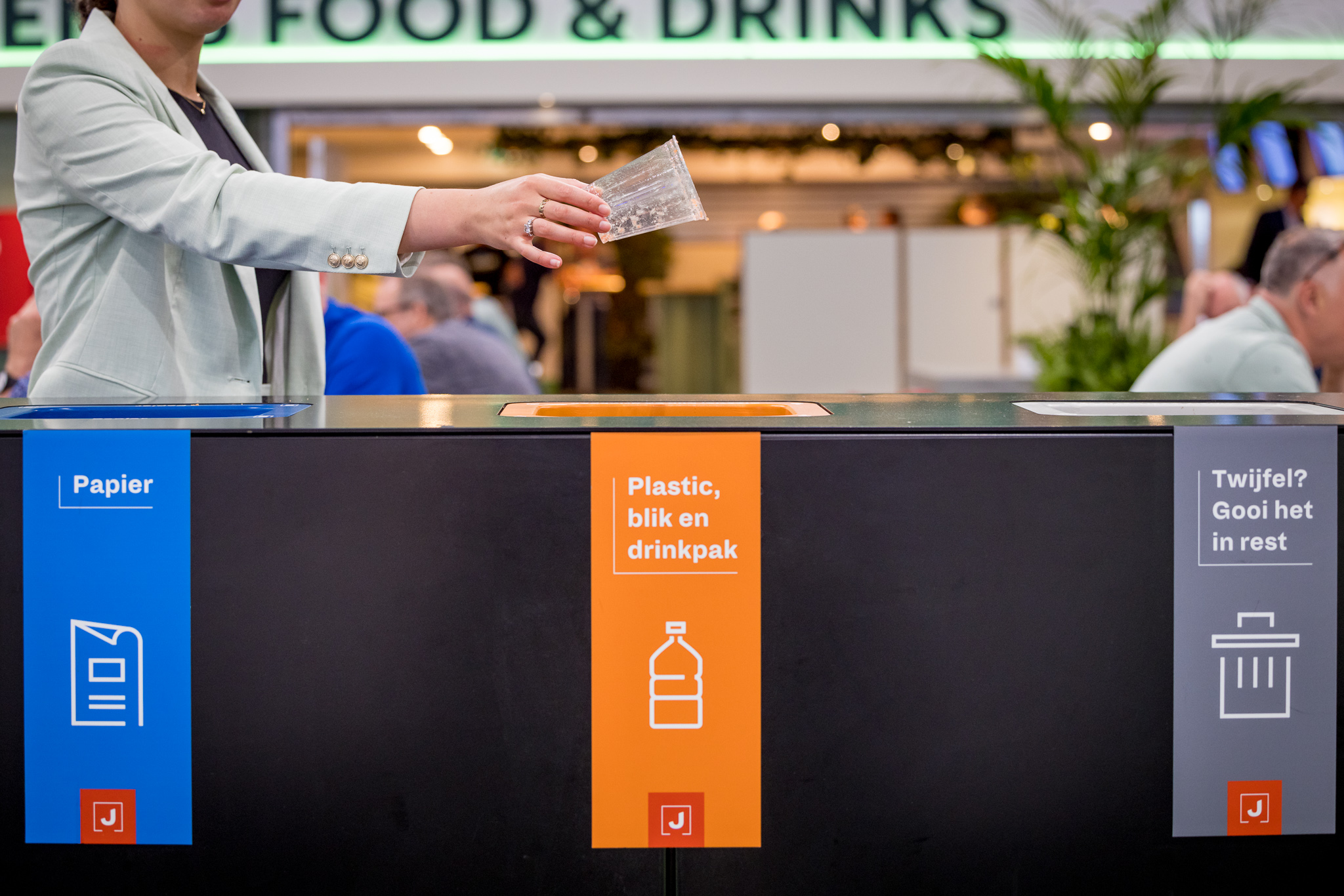
Paper-free office Jaarbeurs
For Van den Berg, sustainability goes beyond operations: it is also about logistics. Everything is brought and retrieved by green transport. "And we are looking at how we can become more sustainable internally, such as in the marketing and sales department. There, we decided to take away a third of the printers in the departments. We are also working in a different way with our media partners: with as few paper catalogues as possible and using the means of our time, such as video content." But sustainability, in Jaarbeurs 's philosophy, is just as much about inclusive staff policy and staying healthy and fit at the boss' expense. Van den Berg: "We worked hard to increase knowledge internally and get everyone on board. Speakers like Jan Rotmans served as inspiration internally. Sustainability must be fully incorporated at the front end, in the company itself and at the back end."
Efficient meeting place
Of course, you might wonder whether organising large-scale fairs is sustainable at all. After all, you are ensuring that thousands of people come to a venue, is that still of our time? O'Connor nods. She understands the question, but research has indeed shown that there is a need for it. "People want to physically see each other to really connect. In addition, it is much more efficient, because you can see many different people in one place in a short time instead of having to make all sorts of different trips to do so." And a big advantage: Jaarbeurs is located at the NS railway station. O'Connor: "That motivates people to come by train rather than by car."
The biggest change for now is that the fair has combined physical with online visits. Because that will remain, even if there are no more lockdowns. Van den Berg calls it an advantage because customers have much longer contact with visitors: "Prior to an event, visitors get a digital preview, and even afterwards there is online contact with video content, matchmaking programmes, reviews, surveys and other information exchanges. This works very well for both visitors and companies."
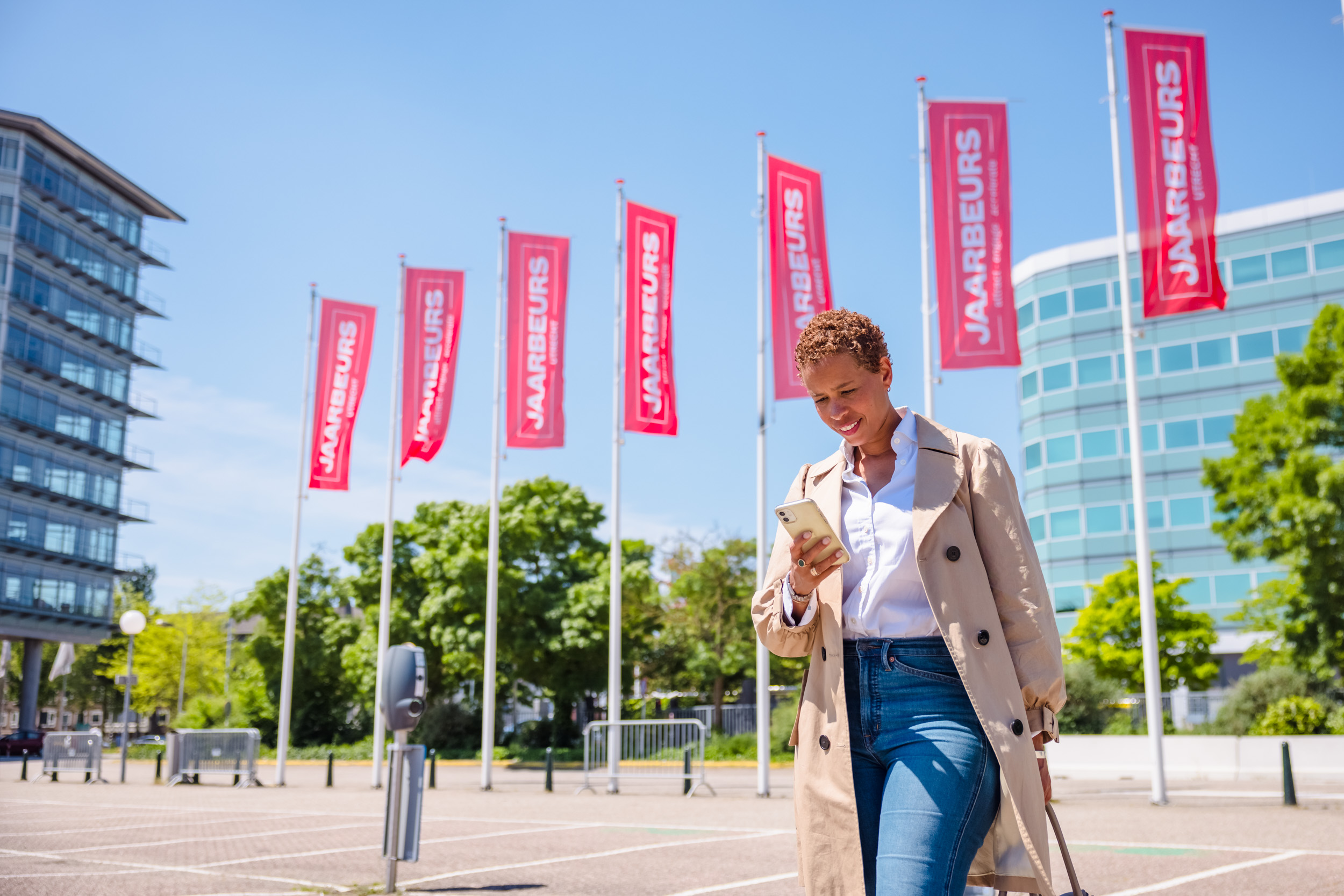
The long-term vision is not so much 'being sustainable for the sake of being sustainable' but to make Jaarbeurs future-proof. Van den Berg: "We are now researching how the new sustainability initiatives work. Then we will see which knobs we can turn. Change does not happen overnight." To also help customers take steps, for example, an awards programme will be introduced and start-ups and scale-ups will get an attractive offer.
O'Connor: "It's about raising awareness among our customers and visitors. What is the goal you want to achieve with your participation? What do you need for that? Is that new carpet, or can it be done with other circular materials? The change that needs to be initiated is systemic. It is a different way of thinking." The only thing missing now for the necessary change to take place is literal action. Van den Berg would like to measure all the changes deployed. "But because our core business has been shut down, there is no way to examine how well the latest measures are working and what the sustainable effects are."
Sustainable acceleration
When the fairs reopen, Jaarbeurs wants to accelerate. "The enthusiasm was great internally, but it is difficult at this stage to keep telling our story online. People need to see changes to experience the difference." And that does not only apply to the internal organisation. Jaarbeurs also needs people externally to make the steps it aspires to. "We believe in scale. Customers who can sustainably justify their participation will go elsewhere. That works as a multiplier. We are sticking our necks out now, but our goal goes beyond Jaarbeurs alone. Sustainability is good and important for everyone."
This article was created in collaboration with Change.Inc and Willemijn van Benthem
Our goal is clear: we want to be Europe's most sustainable conference and event venue. We believe in a world where we treat each other and our environment with care. Where the impact on the earth is reduced by recycling raw materials, controlling and reducing waste and generating our own green energy. With the 2.3 million people we host every year, we can have a positive impact on our environment and the people we touch. You can read how we put this into practice on this page.
